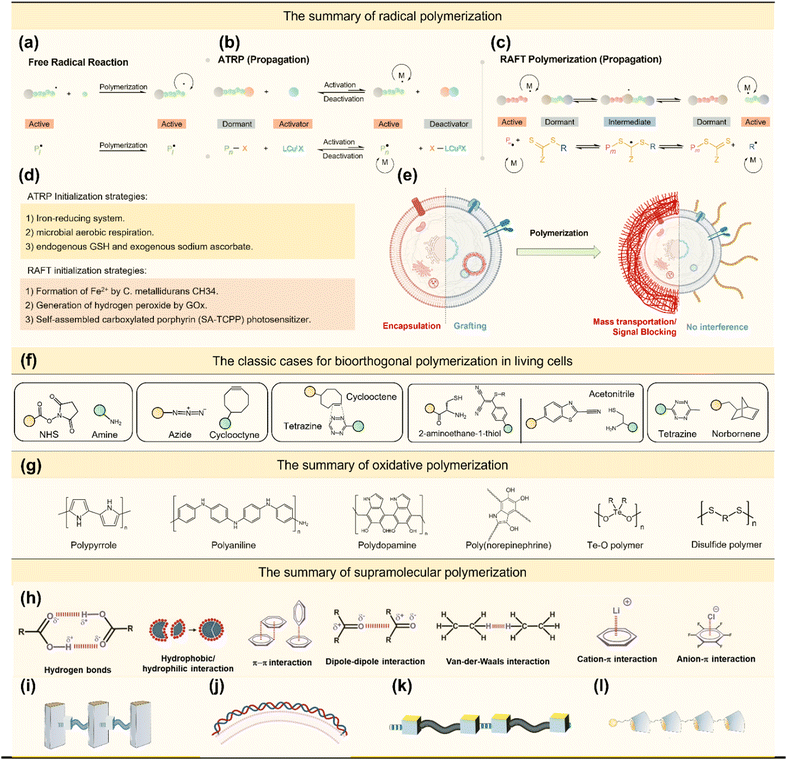Vital biomacromolecules, such as RNA, DNA, polysaccharides and proteins, are synthesized inside cells via the polymerization of small biomolecules to support and multiply life. The study of polymerization reactions in living organisms is an emerging field in which the high diversity and efficiency of chemistry as well as the flexibility and ingeniousness of physiological environment are incisively and vividly embodied. Efforts have been made to design and develop in situ intra/extracellular polymerization reactions. Many important research areas, including cell surface engineering, biocompatible polymerization, cell behavior regulation, living cell imaging, targeted bacteriostasis and precise tumor therapy, have witnessed the elegant demeanour of polymerization reactions in living organisms. In this review, recent advances in polymerization in living organisms are summarized and presented according to different polymerization methods. The inspiration from biomacromolecule synthesis in nature highlights the feasibility and uniqueness of triggering living polymerization for cell-based biological applications. A series of examples of polymerization reactions in living organisms are discussed, along with their designs, mechanisms of action, and corresponding applications. The current challenges and prospects in this lifeful field are also proposed.
